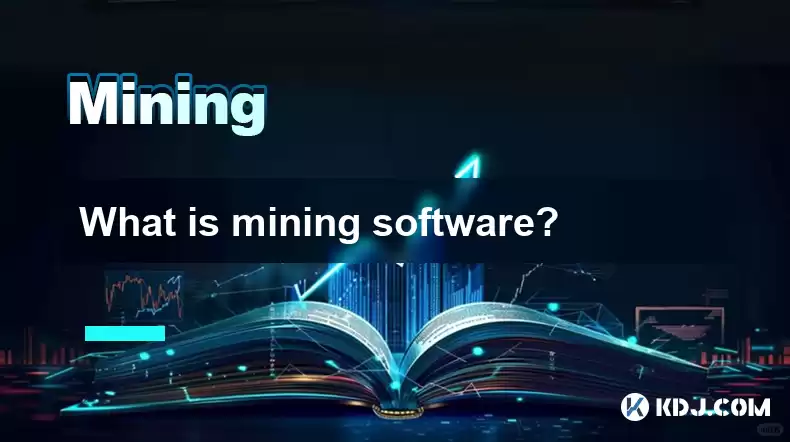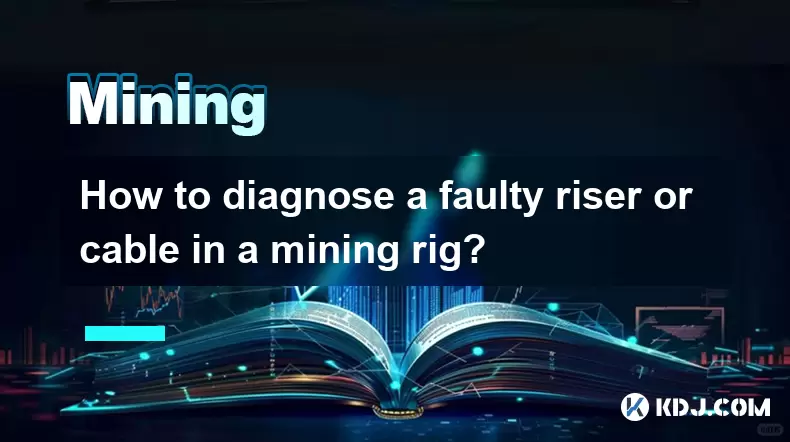-
 Bitcoin
Bitcoin $115100
1.27% -
 Ethereum
Ethereum $3675
2.71% -
 XRP
XRP $2.995
1.45% -
 Tether USDt
Tether USDt $1.000
0.02% -
 BNB
BNB $769.8
2.64% -
 Solana
Solana $168.0
3.25% -
 USDC
USDC $0.9999
-0.01% -
 TRON
TRON $0.3371
1.48% -
 Dogecoin
Dogecoin $0.2051
3.36% -
 Cardano
Cardano $0.7394
2.30% -
 Hyperliquid
Hyperliquid $38.15
0.42% -
 Stellar
Stellar $0.3966
-0.36% -
 Sui
Sui $3.486
2.93% -
 Chainlink
Chainlink $16.72
2.52% -
 Bitcoin Cash
Bitcoin Cash $568.0
4.36% -
 Hedera
Hedera $0.2440
2.59% -
 Ethena USDe
Ethena USDe $1.001
0.04% -
 Avalanche
Avalanche $22.16
2.06% -
 Litecoin
Litecoin $119.1
-0.73% -
 UNUS SED LEO
UNUS SED LEO $8.991
0.04% -
 Toncoin
Toncoin $3.232
-0.39% -
 Shiba Inu
Shiba Inu $0.00001233
2.82% -
 Uniswap
Uniswap $9.717
2.53% -
 Polkadot
Polkadot $3.664
1.85% -
 Dai
Dai $1.000
0.01% -
 Monero
Monero $281.2
-3.89% -
 Bitget Token
Bitget Token $4.350
1.55% -
 Cronos
Cronos $0.1428
5.07% -
 Pepe
Pepe $0.00001050
3.68% -
 Aave
Aave $262.3
3.54%
What is mining software?
Mining software, such as CGMiner, facilitates cryptocurrency mining by enabling miners to connect with a blockchain network and solve complex cryptographic puzzles to earn rewards.
Feb 20, 2025 at 12:30 am

Key Points:
- Definition and Function of Mining Software
- Popular Mining Software Options
- Choosing the Right Mining Software
- Configuring and Using Mining Software
- Tips for Efficient Mining
What is Mining Software?
Mining software is a specialized computer program designed to facilitate cryptocurrency mining. It enables miners to interact with a blockchain network to solve complex cryptographic puzzles and earn rewards in the form of cryptocurrency. Mining software serves as an interface between the miner's hardware and the blockchain, allowing for efficient and automated mining processes.
Popular Mining Software Options:
- CGMiner: One of the most widely used open-source mining software, supporting a range of mining protocols and hardware devices.
- EasyMiner: A user-friendly mining software designed for beginners, featuring an intuitive interface and support for multiple coin pools.
- BFGMiner: A high-performance mining software optimized for ASIC hardware, offering advanced features and high hashrates.
- MinerGate: A comprehensive mining software suite that includes a variety of features, including support for multiple coins, smart mining, and cloud mining.
- Slush Pool MicroBT Miner: A dedicated mining software developed by Slush Pool, offering optimized performance for MicroBT ASIC miners.
- LolMiner: A versatile mining software supporting various mining algorithms and hardware, including GPUs and ASICs.
- PhoenixMiner: A powerful mining software designed for Ethereum mining, offering high efficiency and overclocking capabilities.
Choosing the Right Mining Software:
Selecting the optimal mining software depends on several factors, including:
- Hardware Compatibility: Ensure compatibility with the miner's hardware (GPUs, ASICs, etc.).
- Coin/Protocol Support: Choose software that supports the target cryptocurrency and mining protocol.
- User Interface: Consider the ease of use and configuration, especially for beginners.
- Features: Explore advanced features such as auto-tuning, performance monitoring, and pool selection.
- Community Support: Choose software with a strong user community for support and troubleshooting.
Configuring and Using Mining Software:
- Download and Install: Obtain the appropriate mining software from a reputable source and install it on the miner's computer.
- Configure Settings: Set up mining parameters such as the target coin, mining pool address, worker name, and hardware configuration.
- Join Mining Pool: Connect to a mining pool to distribute mining tasks and earn rewards collectively.
- Start Mining: Initiate the mining process by running the mining software and allowing it to solve cryptographic puzzles.
- Monitor and Manage: Regularly monitor the mining progress, adjust settings as needed, and ensure the miner is running smoothly.
Tips for Efficient Mining:
- Overclock Hardware: Adjust hardware settings to increase hashrate, but ensure stability and avoid overheating.
- Optimize Software: Fine-tune mining software parameters for optimal performance and efficiency.
- Join a Reputable Pool: Select a mining pool with reliable servers, good uptime, and fair payout rates.
- Maintain Stable Electricity Supply: Ensure a reliable power source to avoid interruptions during mining.
- Consider Cloud Mining: Rent computing power from cloud-based mining providers for flexibility and reduced hardware investment.
FAQs:
- What is the difference between mining software and mining hardware?
Mining software is the software that interacts with the blockchain and solves cryptographic puzzles, while mining hardware (GPUs, ASICs) is the physical equipment that performs the mining tasks.
- Which mining software is the most profitable?
Profitability depends on various factors, including hardware capabilities, coin value, mining difficulty, and pool fees. Research different software options and consider their features and compatibility.
- How do I know if my mining software is working properly?
Monitor the mining software's performance metrics, such as hashrate, temperature, and fan speed. Check the miner's dashboard or log files for any errors or stability issues.
- Can I use multiple mining software simultaneously?
It is generally not recommended to run multiple mining software simultaneously on the same hardware, as this can lead to conflicts and reduced performance.
- How do I troubleshoot common mining software issues?
Common issues include hardware incompatibility, software configuration errors, pool connectivity issues, and malware infections. Refer to the software's documentation and online forums for troubleshooting tips.
Disclaimer:info@kdj.com
The information provided is not trading advice. kdj.com does not assume any responsibility for any investments made based on the information provided in this article. Cryptocurrencies are highly volatile and it is highly recommended that you invest with caution after thorough research!
If you believe that the content used on this website infringes your copyright, please contact us immediately (info@kdj.com) and we will delete it promptly.
- BlockDAG, Litecoin, and Cardano: Charting the Course in Crypto's Dynamic Waters
- 2025-08-07 09:09:06
- Fireverse Token: Igniting a Musical Revolution in Web3
- 2025-08-07 08:27:45
- Ethereum, L2 Withdrawals, and Decentralization: A New Yorker's Take
- 2025-08-07 08:32:33
- Avalanche vs. Ruvi AI: Daily Sales Tell a Story of Crypto Disruption
- 2025-08-07 06:29:35
- DeSoc: The Crypto to Buy Now for a Decentralized Future (and Maybe 43x Gains!)
- 2025-08-07 06:50:16
- Arctic Pablo Coin: Riding the Meme Coin Wave with a Deflationary Twist
- 2025-08-07 07:18:13
Related knowledge

What is "proof-of-work" and how does it relate to mining?
Aug 07,2025 at 02:03pm
Understanding the Concept of Proof-of-WorkProof-of-work (PoW) is a consensus mechanism used in blockchain networks to validate transactions and secure...

What are the differences between mining on Windows vs. Linux?
Aug 06,2025 at 11:29pm
Overview of Cryptocurrency Mining PlatformsCryptocurrency mining involves using computational power to solve complex cryptographic puzzles and validat...

How to use an old computer for cryptocurrency mining?
Aug 07,2025 at 12:42pm
Understanding the Feasibility of Using an Old Computer for MiningUsing an old computer for cryptocurrency mining may seem outdated, but it is still te...

Can you mine cryptocurrency using solar power?
Aug 07,2025 at 12:00am
Understanding the Basics of Cryptocurrency MiningCryptocurrency mining involves validating transactions on a blockchain network by solving complex cry...

How to build a mining rig inside a PC case?
Aug 06,2025 at 11:01pm
Understanding the Basics of a Mining Rig in a PC CaseBuilding a mining rig inside a PC case involves transforming a standard computer chassis into a d...

How to diagnose a faulty riser or cable in a mining rig?
Aug 07,2025 at 01:49am
Understanding the Role of Riser Cables in Mining RigsIn a cryptocurrency mining rig, riser cables serve as the bridge between the motherboard and the ...

What is "proof-of-work" and how does it relate to mining?
Aug 07,2025 at 02:03pm
Understanding the Concept of Proof-of-WorkProof-of-work (PoW) is a consensus mechanism used in blockchain networks to validate transactions and secure...

What are the differences between mining on Windows vs. Linux?
Aug 06,2025 at 11:29pm
Overview of Cryptocurrency Mining PlatformsCryptocurrency mining involves using computational power to solve complex cryptographic puzzles and validat...

How to use an old computer for cryptocurrency mining?
Aug 07,2025 at 12:42pm
Understanding the Feasibility of Using an Old Computer for MiningUsing an old computer for cryptocurrency mining may seem outdated, but it is still te...

Can you mine cryptocurrency using solar power?
Aug 07,2025 at 12:00am
Understanding the Basics of Cryptocurrency MiningCryptocurrency mining involves validating transactions on a blockchain network by solving complex cry...

How to build a mining rig inside a PC case?
Aug 06,2025 at 11:01pm
Understanding the Basics of a Mining Rig in a PC CaseBuilding a mining rig inside a PC case involves transforming a standard computer chassis into a d...

How to diagnose a faulty riser or cable in a mining rig?
Aug 07,2025 at 01:49am
Understanding the Role of Riser Cables in Mining RigsIn a cryptocurrency mining rig, riser cables serve as the bridge between the motherboard and the ...
See all articles

























































































